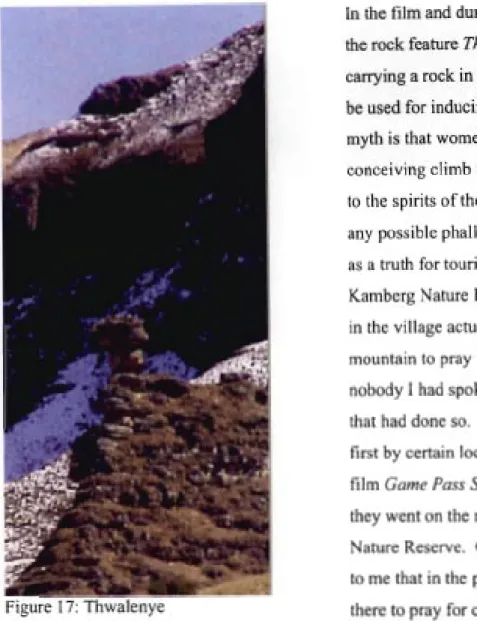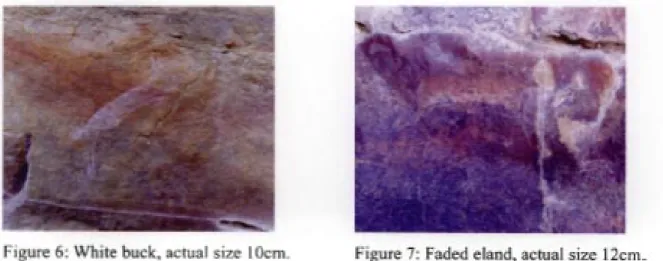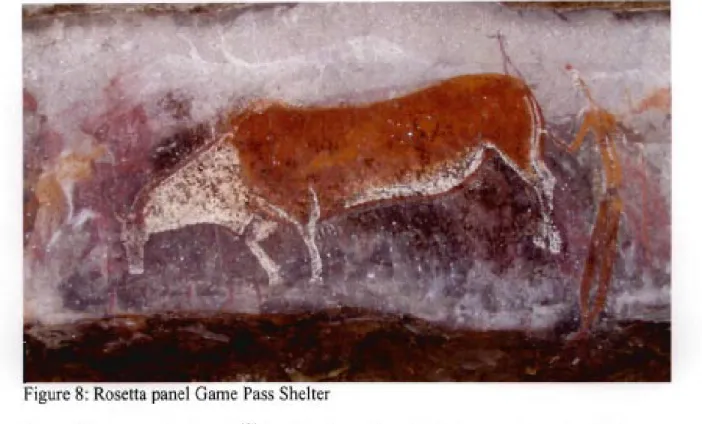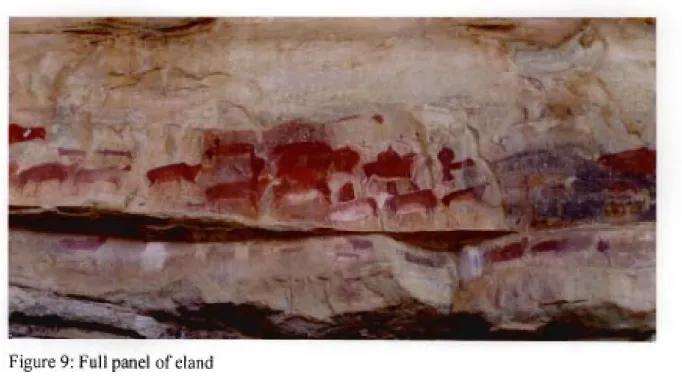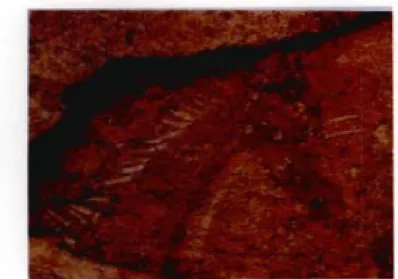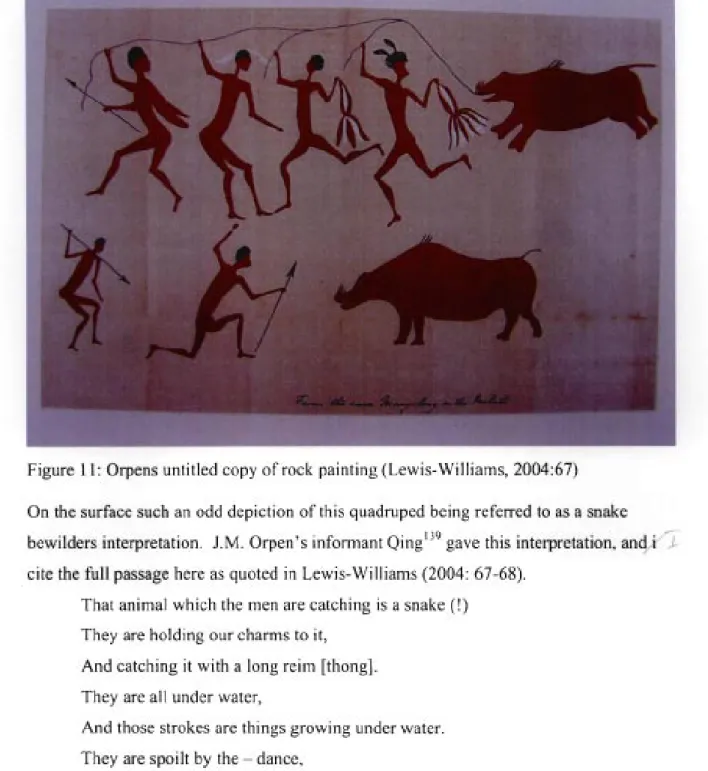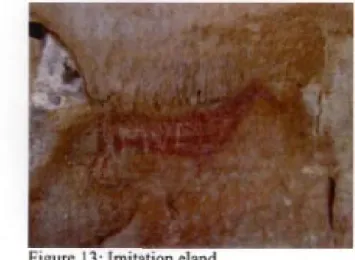This thesis is an ethnographic exploration of the people of the Drakensberg of KwaZulu-Natal, South Africa tracing Zulu and San or Bushman ancestry. I also found that the contemporary ethnography of the Drakensbergs in general can help interpretations of the rock art and also established hegemonies of. I would also like to thank Matthew Whileton for his advice at all stages of the fieldwork and writing and thanks to my fellow PhD student Nhamo Mhiripiri, who also did research under the Duma, and who read and commented on an earlier draft of mine delivered. dissertation.
1 would of course also like to thank the rest of the staff and students. I would also like to thank their cousins Mondli and Chris, and all the rock art guides at the Kamberg Valley Nature Reserve.
Introduction
Many of the people I spoke to in Kambergdalen only know that the Bushmen once lived in the area. The Duma of Thendele occupy eight homesteads in the valley with a large part of their family dispersed to other parts of the Drakensberg that extend from. Within the story there is a hole, an empty place where the San of the Drakensberg has disappeared.
We are doing this for ourselves and for the future of the Abatwa people (Interview, July 2004). He served as chief minister of the K waZulu Bantustan (1970-94) initially as head of the Zulu Land Territorial Authority (Marc and Hamilton, 1987).
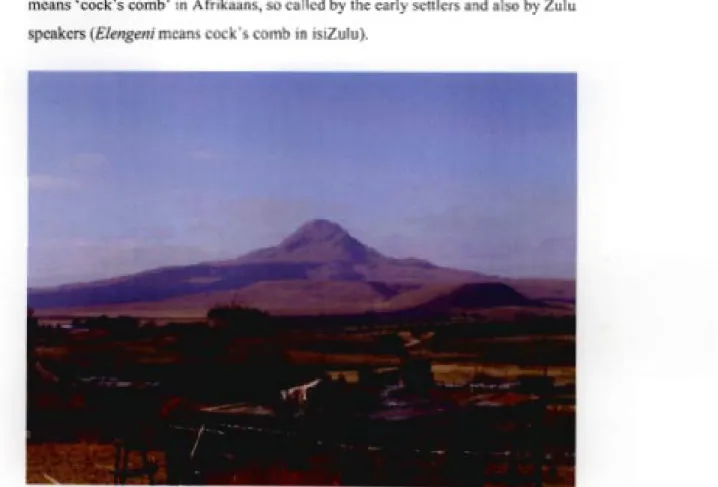
Chapter One - Imaging the San
The imagery and imagination of the San traverses many levels from the local to the global. Zulu-specific imagery used can be seen in the influence of the Zulu King and the IVP's Zulu nationalism. The San are one of the most studied groups of indigenous people in the world.
The Anglo-Zulu War changed the perception of the Zulu people and the Zulu kingdom. 96 Approximately north of the Tugela (Thukela) River as far as Swaziland in northern KwaZulu-Natal is said to lie the land of the Zulu nation (see Guy 1994).
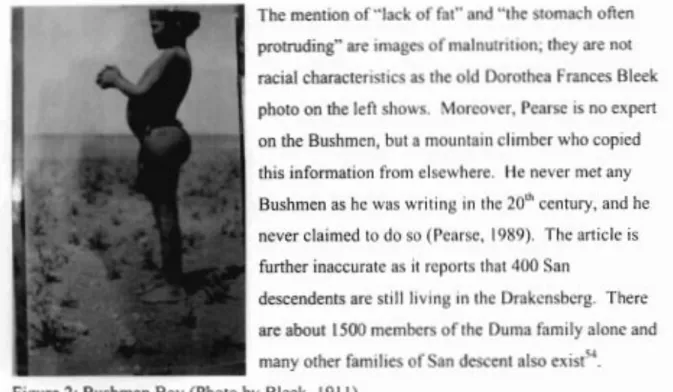
Chapter Two - Methodology: Anthropological cultural studies
I draw on these examples and interviews as they relate directly to the imaging of the San, from Kamberg to the Kalahari. Zulu ethnicity is multifaceted and this project will map some of the contradictions and diversity within the Zulu Nation. I use the term 'out of style' as academic traditions follow trends and whims105• The problem is that anthropologists often study culture despite their best intentions not to.
This may seem like an unnecessarily long and complex definition, but ten culture is one of the most problematic concepts in the social sciences/humanities today. It can refer to the whole range of cultural practices, from art to politics, and from history to self-defined ideas about the future. All this must be read against the background of the history of the region and its people to trace genealogies of ideas and concepts (Foucault, 1972).
The main things that I would argue are of San origin are the use of a lot of local resources. The area's mythology draws from OI/tales of San and magical creatures such as the Inkanyamba, described in detail below. Behind the idea of networks lies a 'taint' of the structuralist realization of the active nature of meaning-making (culture formation).
In relation to the notion of cultural studies as mapping the terrain of struggle, this terrain is embodied in the discourses (both in the sense of conversation and in the sense of knowledge/power). This ties in with the anthropological idea of the insight an anthropologist has acquired in the field, where cultural patterns 'once seen, [are] never invisible again' (Inglis, 2000: 47). Cultural forms are instruments for living and thinking, and the 'system' once described must not be stripped of the active subject or reduced to absolute rigidity.
Chapter Three - A brief history of the Drakensberg
These things developed over time, but the balance of power would originally have been in favor of the San. This is not about the settlement of the Drakensberg Mountains, but about the emergence of a painting tradition. Dumisa's story is an essential part of the Duma family genealogy.
Little information is available in the archives about the culture and languages of the San of the Drakensberg. This has an earlier genesis as at the Cape in the early 18th century. The San were regarded with disgust and contempt by some of the earliest explorers and settlers (see Skotnes, 1996).
I have already summarized the early archeology of the region pushing back the contact and presence of the Nguni in the Drakensberg to 300 AD. Historical records show that Duma lived in this part of the Drakensberg at the beginning of the 19th century (Bleek. Mkhomazi is said to be the house of rain in the Drakensberg and there are secret sanctuaries of the Duma family125.
Most importantly, they are places they want to be able to visit at will because of their ancestral significance. A connection between the former Duma people of Mpondomise of Port Shepstone and the present Duma peoples of the Drakensberg is not in dispute. Duma's claims resonate with the colonial history of the attempted dispossession of the San people by colonial settlers.
Chapter Four- Contested histories: A critique in the Rock Art
The image quality of the photo is quite high; it is rock art that elf that has faded. This assumption is supported by the main rock faces in the Drakensberg due to the common theme of eland depicted along with humans. Many scenes in rock art are 'ecstatic dance' or essentially religious in nature, but others are not.
Examples of the blending of Christian and traditional beliefs abound in the use of ancestors. The creation of the ceremony was done with the help of the KwaZulu-Natal San. The use of the eland was granted by KwaZulu-Natal Wildlife and because of its importance in the rock art of the area, it resonated with their idealized ritual.
In the Bleek collection many stories refer to the creation of the moose and it plays a central role in much of the mythology depicted. The first time this event was held was to (re)introduce their more contemporary ancestors to the ancestors of the mountains (San) and to the river spirits. The mythology of the river spirits and the importance of the moose are common themes among the Duma family (Fieldnotes, June 2003; April 2004).
161 The centrality of the moose in San cosmology is explained elsewhere (see Lewis-Williams, 2003) and the Dumas see it as important because of its dominance in the rock art locally (Field notes. One of the rock art tour guides is a cousin, so they could have a family member accompany them. The Amafa representative determined that due to the size of the ceremony and the number of people attending, an Amafa approved.
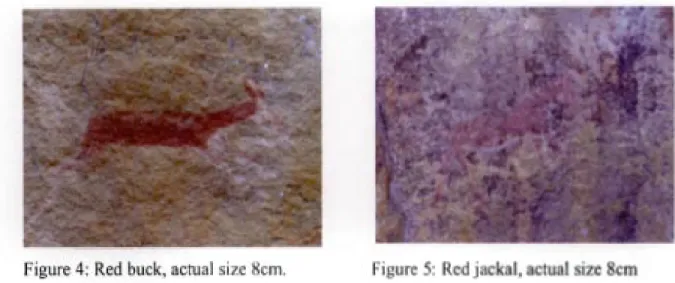
Chapter Five - Subjects and subjectivities: Where do we all fit in?
The guides were one of the best sources of information about local events and helped me find important elders and introduce myself to others in town. Most of the guides' surnames reflect the common names of the Zulu clan, Mncube, Ndlovu, Mbelu, Dladla. Despite the long history of a cash economy and the loss of economic importance of the Umuzites, social-symbolic factors remain.
Some of the people who had experienced abuse during Apartheid associate all 'white' people with that past and. Vincent Crapanzano wrote one of the rare ethnographies about the white population of South Africa. 190 This was echoed in the Kalahari by Vetkat Kruiper, who spoke of being like a "gas bottle" in the baek of the bakkie (Kalahari Fieldnotes, 2004).
My role as an interpreter of the events I experienced is characterized by my own background and life. The racial barrier is broken by one of my most important pieces of information about the Duma family. Autoethnography involves the use of cultural richness for self-reflection and understanding of the nature of the encounter.
An example from my department's group research trips to the Kalahari is that of the blowing wind stopping the purchase and slaughter of a sheep (Tomaselli, 2001). Large beer quarts (750 ml) follow some of the ritual practices from drinking utshwala. Most of the drinking is done in local shebins, while in the past it was done to receive guests in one's home, to honor the ancestors and to enjoy after a hard day's work213.
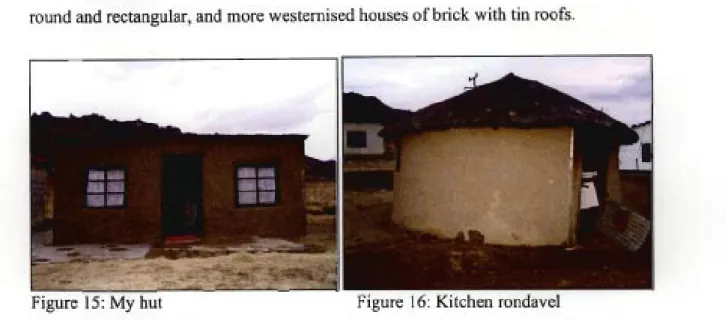
Chapter Six - Poverty and Parks: Rural development, rural poverty and structural violence
It is now the largest protected area on the Great Escarpment of the South African subcontinent. This also implies a subordinate relationship between local poor women and the management of the reserve. Most plants also appear in the book Medicinal Plants of South Africa and have been tested for efficacy (Gericke, 2002).
Access to rock art sites is based on Amafa rules which claim to be for the conservation of. This is incorrect as far as the historical and more recent prehistoric populations of Abatwa are concerned. 255San's image appears in brochures, websites and on all reserves in the Drakensberg that I.
Some of the stories presented in the video and during the guided walks to the rock art are. The myth says that women who have trouble conceiving climb this mountain to pray to the mountain spirits. The 'truth' power of media images is also shown through the use of rock art tours and the video used in Kamberg (Game Pass, 2000).
The end product of tourist goods is a simulacrum due to the removal of the original referent and spiritual meaning. In Southern Africa, the ten natives are mostly used to refer to the black majority as opposed to people of European or Asian descent (Crawhall, 1999: 1). Before the start of the ceremony, Kerrick Ntusi was mobbed for photos by members of the public.
